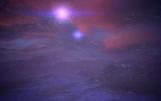
Tereshkova News: Terraforming has begun on Antibaar.
Tereshkova
Overall fame/aspect title: (none yet)
Abstract; summation of all major producing planets within this system:
(none yet)
Overall fame/aspect title: (none yet)
Abstract; summation of all major producing planets within this system:
(none yet)

System: Tereshkova

Solar System Collectives
Hierarchically Descending
Tereshkova
Asteroid Belt
Antibaar
Patamalrus
Hunsalra
Thegeuse
Solmarlon
Mawinor
Asteroid Belt
Antibaar
Patamalrus
Hunsalra
Thegeuse
Solmarlon
Mawinor
---[Star Data]---
Stellar ID:
Class:
Radius:
Mass:
Luminosity:
Temperature:
Distance:
---[Planets]---
6
---[Moons]---
0
---[Asteroid Belts]---
1
---[Planetoids]---
###,###+
---[Comets]---
#,###+
Stellar ID:
Class:
Radius:
Mass:
Luminosity:
Temperature:
Distance:
---[Planets]---
6
---[Moons]---
0
---[Asteroid Belts]---
1
---[Planetoids]---
###,###+
---[Comets]---
#,###+
Tereshkova (year) A
N
6,501 km
1.134 Earth Masses
(N/A) #.##
N/A
-34 °C / -29.2 °F
1.1 g
#.# atm
1.1 g
#.# atm
(N/A) 0.79 AU
3.2 Earth Years
54.1 Earth Hours
Yes; year
No; year
---[Planet Data]---
Stellar ID:
Class:
Radius:
Mass:
Keplerian Ratio:
Stellar ID:
Class:
Radius:
Mass:
Keplerian Ratio:
Luminosity:
Surface Temperature:
Day Length:Surface Temperature:
Surface Gravity:
Atmospheric Pressure:
Atmospheric Pressure:
Orbital Distance:
Orbital Period:
Orbital Period:
---[Status]---
Colonized:
Terraformed:
---[Moons]---
0
---[Rings]---
0
---[Artificial Satellites]---
0
---[Indigenous]---
N/A
Colonized:
Terraformed:
---[Moons]---
0
---[Rings]---
0
---[Artificial Satellites]---
0
---[Indigenous]---
N/A
Tereshkova (year) B
N
5,831 km
0.647 Earth Masses
(N/A) #.##
N/A
451 °C / 843.8 °F
0.78 g
90.47 atm
0.78 g
90.47 atm
(N/A) #.# AU
15.3 Earth Years
47.1 Earth Hours
Yes; year
No; year
Tereshkova (year) C
N/A
11,496 km
(N/A) #.### Earth Masses
(N/A) #.##
N/A
(N/A) # °C / °F
(N/A) #.# g
(N/A) #.# atm
(N/A) #.# g
(N/A) #.# atm
(N/A) #.# AU
46.2 Earth Years
18.6 Earth Hours
Yes; year
No; year
---[Planet Data]---
Stellar ID:
Class:
Radius:
Mass:
Keplerian Ratio:
Stellar ID:
Class:
Radius:
Mass:
Keplerian Ratio:
Luminosity:
Surface Temperature:
Day Length:Surface Temperature:
Surface Gravity:
Atmospheric Pressure:
Atmospheric Pressure:
Orbital Distance:
Orbital Period:
Orbital Period:
---[Status]---
Colonized:
Terraformed:
---[Moons]---
0
---[Rings]---
0
---[Artificial Satellites]---
0
---[Indigenous]---
N/A
Colonized:
Terraformed:
---[Moons]---
0
---[Rings]---
0
---[Artificial Satellites]---
0
---[Indigenous]---
N/A
---[Planet Data]---
Stellar ID:
Class:
Radius:
Mass:
Keplerian Ratio:
Stellar ID:
Class:
Radius:
Mass:
Keplerian Ratio:
Luminosity:
Surface Temperature:
Day Length:Surface Temperature:
Surface Gravity:
Atmospheric Pressure:
Atmospheric Pressure:
Orbital Distance:
Orbital Period:
Orbital Period:
---[Status]---
Colonized:
Terraformed:
---[Moons]---
0
---[Rings]---
0
---[Artificial Satellites]---
0
---[Indigenous]---
N/A
Colonized:
Terraformed:
---[Moons]---
0
---[Rings]---
0
---[Artificial Satellites]---
0
---[Indigenous]---
N/A
Yes; year
No; year
Tereshkova (year) D
N
5,130 km
0.302 Earth Masses
(N/A) #.##
N/A
-141 °C / -221.8 °F
0.47 g
0.49 atm
0.47 g
0.49 atm
(N/A) #.# AU
25.3 Earth Years
25.3 Earth Hours
Tereshkova (year) E
I
69,862 km
(N/A) #.### Earth Masses
(N/A) #.##
N/A
(N/A) # °C / °F
(N/A) #.# g
(N/A) #.# atm
(N/A) #.# g
(N/A) #.# atm
(N/A) #.# AU
399.7 Earth Years
14.4 Earth Hours
Yes; year
No; year
---[Planet Data]---
Stellar ID:
Class:
Radius:
Mass:
Keplerian Ratio:
Stellar ID:
Class:
Radius:
Mass:
Keplerian Ratio:
Luminosity:
Surface Temperature:
Day Length:Surface Temperature:
Surface Gravity:
Atmospheric Pressure:
Atmospheric Pressure:
Orbital Distance:
Orbital Period:
Orbital Period:
---[Status]---
Colonized:
Terraformed:
---[Moons]---
0
---[Rings]---
0
---[Artificial Satellites]---
0
---[Indigenous]---
N/A
Colonized:
Terraformed:
---[Moons]---
0
---[Rings]---
0
---[Artificial Satellites]---
0
---[Indigenous]---
N/A




Note
Patamalrus' atmosphere is very similar to Venus in terms of pressure and temperature. Unlike Venus, however, Patamalrus' atmosphere has a significant quantity of oxygen, both free and bound in sulphur dioxides. The surface is largely composed of magnesia with deposits of carbon. It is possible, if unlikely, that simple life may be developing on Patamalrus.
Computer modeling suggests that the powerful solar winds from the Tereshkova stars will blow off Patamalrus' atmosphere in a few million years, lowering the temperature on the surface to the −70s.
Patamalrus' atmosphere is very similar to Venus in terms of pressure and temperature. Unlike Venus, however, Patamalrus' atmosphere has a significant quantity of oxygen, both free and bound in sulphur dioxides. The surface is largely composed of magnesia with deposits of carbon. It is possible, if unlikely, that simple life may be developing on Patamalrus.
Computer modeling suggests that the powerful solar winds from the Tereshkova stars will blow off Patamalrus' atmosphere in a few million years, lowering the temperature on the surface to the −70s.
Note
"The-geuse is loose."
Thegeuse is a terrestrial world with an atmosphere of chlorine and krypton. The surface is mainly composed of silicates with deposits of carbon. Thegeuse has a low mass for its size, and is tidally locked to the star Tereshkova-A. The temperature difference between the sunward "hot pole" and the dark side "cold pole" creates constant gale-force winds across the terminator.
"The-geuse is loose."
Thegeuse is a terrestrial world with an atmosphere of chlorine and krypton. The surface is mainly composed of silicates with deposits of carbon. Thegeuse has a low mass for its size, and is tidally locked to the star Tereshkova-A. The temperature difference between the sunward "hot pole" and the dark side "cold pole" creates constant gale-force winds across the terminator.
Note
Hunsalra is a small hydrogen-helium gas giant. It has unusually large amounts of nitrogen in the upper atmosphere, which glow purple when ionized by the solar wind. Hunsalra's convenience as a place to dump drive charge has left its orbit littered with debris "dumped overboard" by visiting crews.
Hunsalra is a small hydrogen-helium gas giant. It has unusually large amounts of nitrogen in the upper atmosphere, which glow purple when ionized by the solar wind. Hunsalra's convenience as a place to dump drive charge has left its orbit littered with debris "dumped overboard" by visiting crews.
Note
Antibaar is a cold terrestrial world with an atmosphere of methane and argon. Its frozen surface is mainly composed of iron with deposits of magnesium. The world has been noted as a possible target for long-term terraforming; if the atmosphere could be increased to the thickness of Earth's, the global average temperature would rise by 10 degrees Celsius.
Antibaar's combination of low temperatures, high speed surface winds, and low visibility make it dangerous to explore on foot.
Antibaar is a cold terrestrial world with an atmosphere of methane and argon. Its frozen surface is mainly composed of iron with deposits of magnesium. The world has been noted as a possible target for long-term terraforming; if the atmosphere could be increased to the thickness of Earth's, the global average temperature would rise by 10 degrees Celsius.
Antibaar's combination of low temperatures, high speed surface winds, and low visibility make it dangerous to explore on foot.
Major Regions
Continents
Continent
Cities
Oceans
Ocean
Cities
Continent
Cities
Oceans
Ocean
Cities
D = Destroyed / ruins
Albums
Photos
x
x
Videos
x
x
x
x
Videos
x
x
C = Classified
Albums
Photos
x
x
Videos
x
x
x
x
Videos
x
x
C = Classified
Major Regions
Continents
Continent
Cities
Oceans
Ocean
Cities
Continent
Cities
Oceans
Ocean
Cities
D = Destroyed / ruins
Major Regions
Continents
Continent
Cities
Oceans
Ocean
Cities
Continent
Cities
Oceans
Ocean
Cities
D = Destroyed / ruins
Albums
Photos
x
x
Videos
x
x
x
x
Videos
x
x
C = Classified
Albums
Photos
x
x
Videos
x
x
x
x
Videos
x
x
C = Classified
Major Regions
Continents
Continent
Cities
Oceans
Ocean
Cities
Continent
Cities
Oceans
Ocean
Cities
D = Destroyed / ruins

反欄
---[Planet Data]---
Stellar ID:
Class:
Radius:
Mass:
Keplerian Ratio:
Stellar ID:
Class:
Radius:
Mass:
Keplerian Ratio:
Luminosity:
Surface Temperature:
Day Length:Surface Temperature:
Surface Gravity:
Atmospheric Pressure:
Atmospheric Pressure:
Orbital Distance:
Orbital Period:
Orbital Period:
---[Status]---
Colonized:
Terraformed:
---[Moons]---
0
---[Rings]---
0
---[Artificial Satellites]---
0
---[Indigenous]---
N/A
Colonized:
Terraformed:
---[Moons]---
0
---[Rings]---
0
---[Artificial Satellites]---
0
---[Indigenous]---
N/A
Tereshkova (year) F
D
1,170 km
0.003 Earth Masses
(N/A) #.##
N/A
-228 °C / -378.4 °F
0.08 g
0.00 atm
0.08 g
0.00 atm
#.# AU
662.7 Earth Years
61.8 Earth Hours
Yes; year
No; year

Major Regions
Continents
Continent
Cities
Oceans
Ocean
Cities
Continent
Cities
Oceans
Ocean
Cities
D = Destroyed / ruins
Albums
Photos
x
x
Videos
x
x
x
x
Videos
x
x
C = Classified
Note
Solmarlon is one of Tereshkova's two outer worlds. Significantly removed from the rest of the system, and with unstable elliptical orbits, it is thought they may have formed within 3 AU of the binary stars, and were hurled outward due to the instability of such an orbit.
Solmarlon is a hydrogen-helium gas giant with significant quantities of sodium in the upper atmosphere, giving it a distinct grey color.
Solmarlon is one of Tereshkova's two outer worlds. Significantly removed from the rest of the system, and with unstable elliptical orbits, it is thought they may have formed within 3 AU of the binary stars, and were hurled outward due to the instability of such an orbit.
Solmarlon is a hydrogen-helium gas giant with significant quantities of sodium in the upper atmosphere, giving it a distinct grey color.
魚鰾中的或
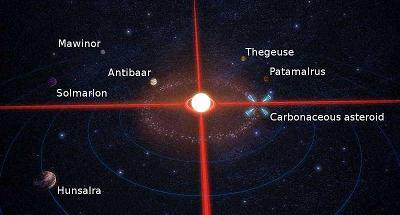
Stellar Mass:
Stellar Class:
Luminosity:
Planets:
Moons:
Asteroid Belts:
Asteroids:
Additional Objects:
N/A
M V, M V
N/A
6
0
1
1
0
Antibaar
Patamalrus
帕塔發作羅斯
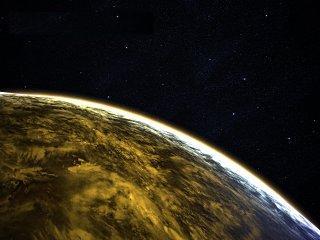
Hunsalra
匈奴人嶺


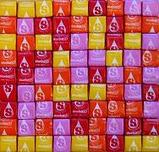
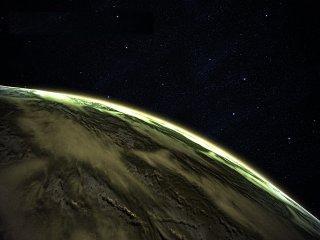
Thegeuse
日愛琴使用
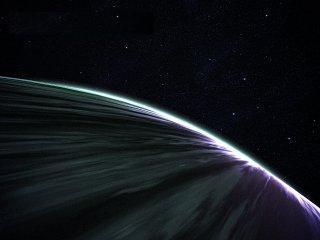
Solmarlon
溶膠馬龍
Mawinor
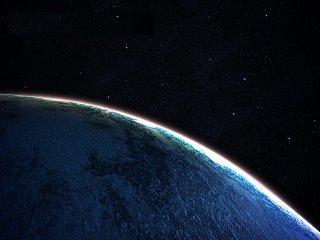
系統
Note
Tereshkova is a large system with six planets and an asteroid belt. It is named after Valentina Tereshkova, the first woman to fly in Space.
Tereshkova is a binary system with Tereshkova-A in the center; unlike Vamshi their combined energy is low (and the system is more explicable). It appears to be in a state of change. Patamalrus is set to lose its atmosphere and Mawinor to be ejected entirely.
Tereshkova is a large system with six planets and an asteroid belt. It is named after Valentina Tereshkova, the first woman to fly in Space.
Tereshkova is a binary system with Tereshkova-A in the center; unlike Vamshi their combined energy is low (and the system is more explicable). It appears to be in a state of change. Patamalrus is set to lose its atmosphere and Mawinor to be ejected entirely.
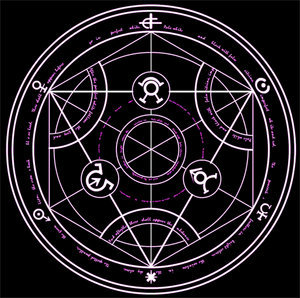
_
M V, M V
(N/A) #.# sol
(N/A) #.# sol
(N/A) ## sol
##,### °K (##,### °F)
# AU
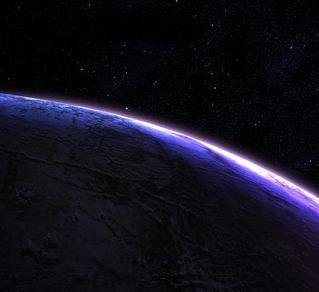
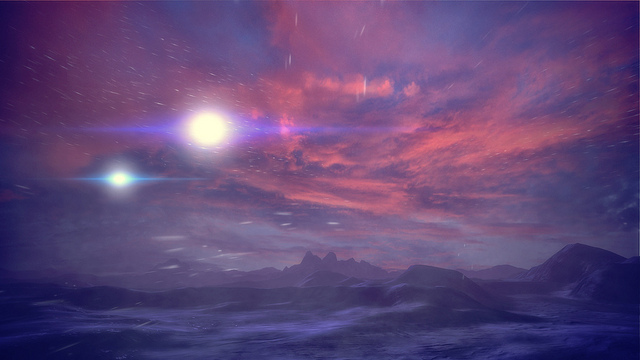
---[Planet Data]---
Stellar ID:
Class:
Radius:
Mass:
Keplerian Ratio:
Stellar ID:
Class:
Radius:
Mass:
Keplerian Ratio:
Luminosity:
Surface Temperature:
Day Length:Surface Temperature:
Surface Gravity:
Atmospheric Pressure:
Atmospheric Pressure:
Orbital Distance:
Orbital Period:
Orbital Period:
---[Status]---
Colonized:
Terraformed:
---[Moons]---
0
---[Rings]---
0
---[Artificial Satellites]---
0
---[Indigenous]---
N/A
Colonized:
Terraformed:
---[Moons]---
0
---[Rings]---
0
---[Artificial Satellites]---
0
---[Indigenous]---
N/A

Major Regions
Continents
Continent
Cities
Oceans
Ocean
Cities
Continent
Cities
Oceans
Ocean
Cities
D = Destroyed / ruins
Albums
Photos
x
x
Videos
x
x
x
x
Videos
x
x
C = Classified
Note
Mawinor is the second of Tereshkova's outer worlds. It is essentially a rock of unremarkable ores with some deposits of water ice, but no minerals of value. The frozen surface is composed of silica.
Like the gas giant Solmarlon, it is thought that Mawinor formed too close to the Tereshkova stars and was thrown outwards by gravitational effects. Computer models suggest it will be ejected from the system in a few hundred thousand years.
Mawinor is the second of Tereshkova's outer worlds. It is essentially a rock of unremarkable ores with some deposits of water ice, but no minerals of value. The frozen surface is composed of silica.
Like the gas giant Solmarlon, it is thought that Mawinor formed too close to the Tereshkova stars and was thrown outwards by gravitational effects. Computer models suggest it will be ejected from the system in a few hundred thousand years.




